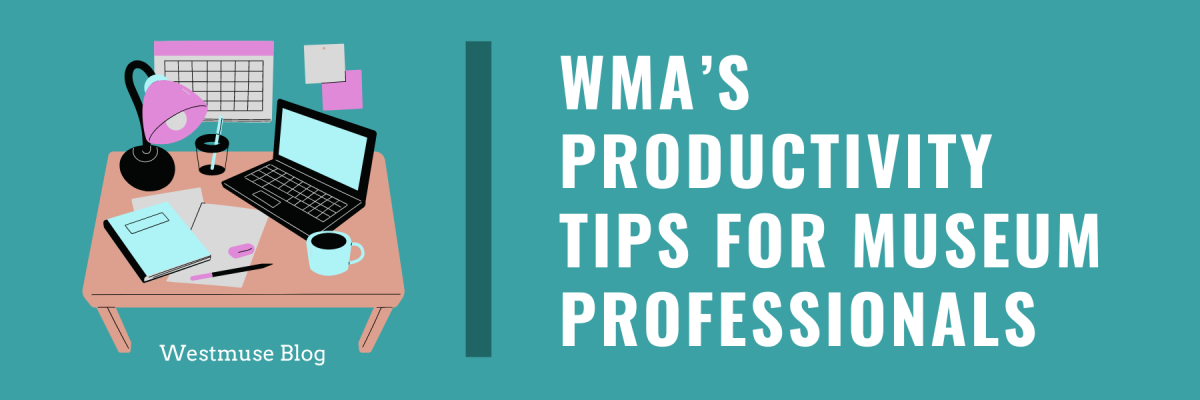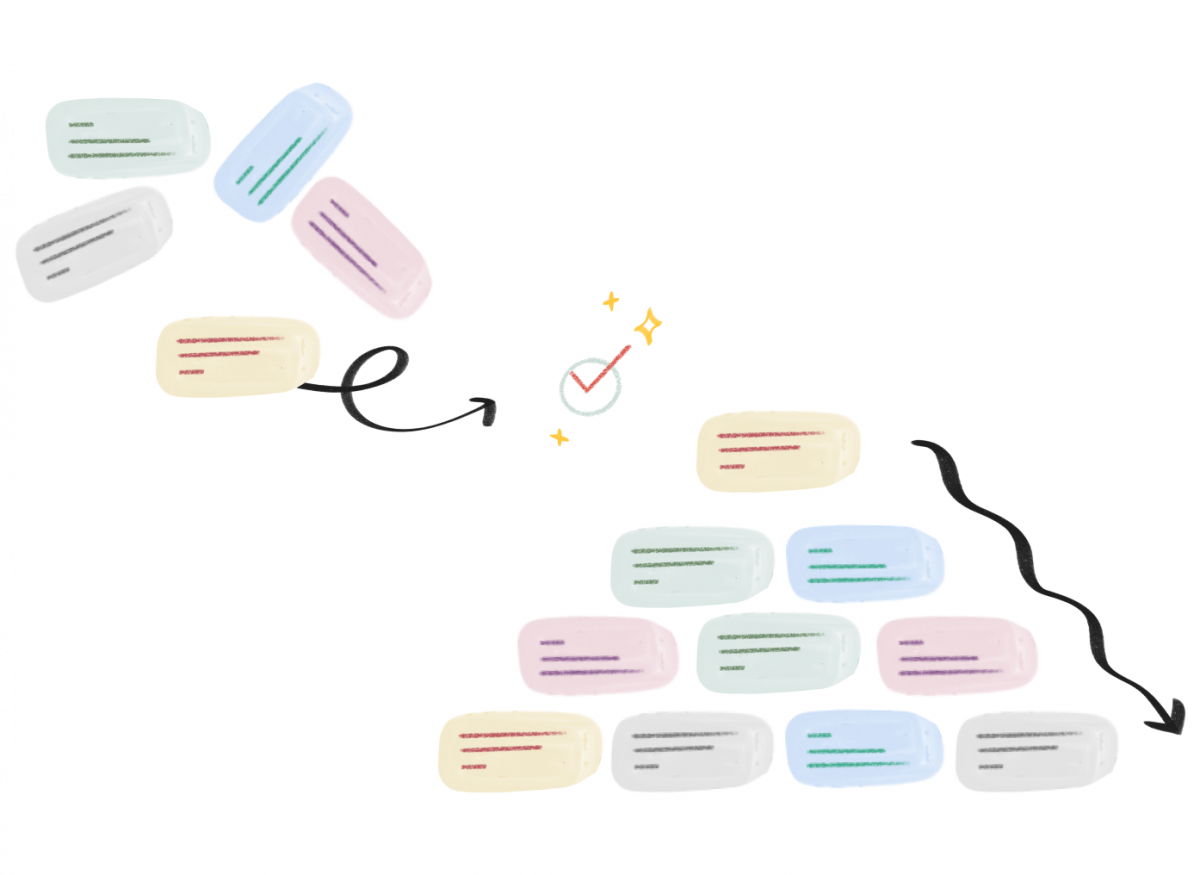
These days, working in a museum has never been so demanding. Professionals are taking on new responsibilities beyond their typical role due to staff layoffs, trying to find that sweet balance between work and homelife, having to learn and rely on various technologies, and are working to manage their mental health.
How do you succeed while working at home or in isolation? How do you tackle that endless to-do list? How do you approach new projects or daily tasks?
Here are a few productivity tips and positive actions that can help you accomplish work and gain back some time to spend on yourself. Don’t try to implement all these ideas at once, but rather start with the ones that resonate with you.
1.Eat the Frog
Mark Twain once famously said, “Eat a live frog first thing in the morning and nothing worse will happen to you the rest of the day.” If you struggle with procrastination or feel overwhelmed with everything ahead of you, Eat the Frog is the perfect productivity method for you. You’ll get the worst, or highest priority task done first thing in the morning, setting the tone for the rest of your day.
In their article Eat the Frog, Todoist breaks down what exactly Eat the Frog is, why it works, and tips for how to best eat your frogs. Read it here.
2.Use the Two-Minute Tool
If eating your biggest frog first doesn’t sound that great to you, there’s another way you can start your day. Author of Getting Things Done David Allen popularized what is known as the Two-Minute Tool. The Two-Minute Tool basically states that if a task will take you less than two-minutes to complete, do it right then and there. First thing first. The idea behind this is that it would take you much longer than two minutes to look at the task again, review it, and reflect on it later. It’s pure efficiency.
The Doist blog has a great article on how to apply this technique to your life and to stop procrastinating. Read it here.

Image from Doist Blog
3.Plan Your Week Ahead
When it comes to getting control over your schedule and making room for some personal downtime or family time, making a weekly plan can help. Not only will you be more productive in getting things done, but you’ll be more at ease as you navigate from task to task, knowing what’s next on your list.
To start, you’ll need to pick a planning session day and time. Whether you want to plan out the week ahead on a Sunday, Monday, or even the Friday before, the day doesn’t matter if it works best for you. Then try it out, take it for a test run; and once you find that perfect schedule, commit to it! Turn your weekly planning session into a habit.
Next, do a brain dump. Get everything out of your brain and onto some paper (or type it out on the computer). Include everything from work assignments, to bills, to plans with friends and grocery shopping. The more comprehensive you can be the better. So why does a brain dump work? Head here to find out and learn how this useful technique can untangle your mind.
Once you have the ultimate list of everything you need to do, you’ll want to prioritize your tasks. If mental health is a priority for you, then think about how you can focus on meditating, going for a walk, or cooking a good meal throughout the week. If you have children, you might need to stay on top of their needs and schedules. After you have identified your top priorities for the week, schedule those out first, making sure you have more than enough time to accomplish them.
Head over to the Monday Blog for more advice on how to plan out your week and how to stick to your weekly plan.
4.Set Deadlines
Deadlines are essential when it comes to working productively. Setting a deadline will help ensure that your work gets completed in a smooth and timely manner and allow you to not overextend yourself. However, there are many ways to make a deadline effective.
When you have a long-term project or are faced with an abundance of choices, planning backwards can help you finish on time. The idea is to set the deadline first and then work backwards, deciding how you will achieve it.
Another good strategy is to break down the project. This is standard advice for any task or project, but breaking down what’s in front of you, will allow you to tackle it one step at a time. Each step should be small enough to not take up too much time, as to not be intimidating, and each step should be given its own time estimate. This will keep you on track.
There are endless ways in which you can work towards a deadline and set yourself up for timely success. For additional strategies, read the article 22 Tips for Effective Deadlines from Lifehack.

Image from HBR
5.Use Creativity, Especially When in Isolation
As the world continues to endure the COVID-19 pandemic, a lot of people have experienced the feeling of being caught in a holding pattern, especially when stuck in isolation. We all are living in a time when planning out our long-term futures, our weeks, or even our days, can feel next to impossible sometimes. With the pandemic keeping us in a stressful limbo, harnessing our sense of creativity is a must.
According to this NPR Life Kit, “trying something different — for example, experimenting with a new creative medium — might be uncomfortable, but it can also get you out of a rut.” And that’s just it. From engaging in a creative outlet to spending more time in nature, you can counteract any anxieties you may have and set forth on more clear, productive path.
Furthermore, the Harvard Business Review offers five research-backed strategies to enhance your creativity and stay creative in our sometimes monotonous world.
From accomplishing your biggest task first, to learning how to be more creative, there are so many positive actions you can take to become more productive and less stressed, or to break yourself out of your isolation productivity funk. We hope that one or some of these tips have resonated with you.
Add new comment